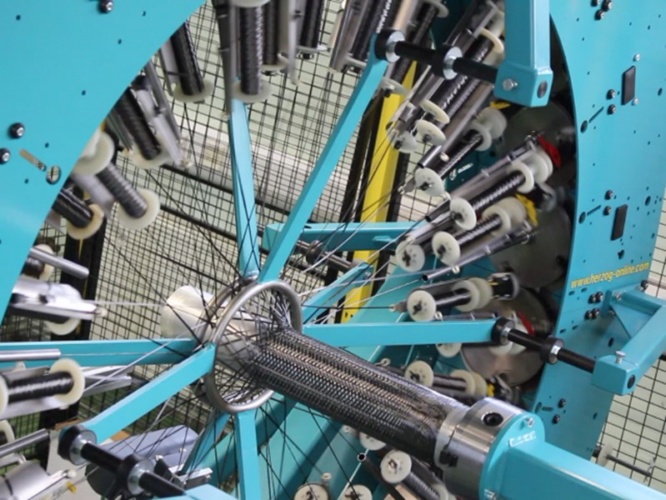
The claim hinges om work published in the Journal of Composites Science and Technology, in which researchers have demonstrated a comprehensive picture of the evolution of damage in braided textile composites.
The art of 21st Century 3D weaving
Babcock and University of Edinburgh collaborate on new composites facility
Textile composites offer great potential in creating light-weight damage-tolerant structures. However, their uptake in the high value manufacturing sector has been inhibited by lack of adequate design and material performance data.
The 3D imaging processes used by the group have provided real-time data of how carbon fibre composite tubes perform under structural loading, which provides a blueprint for maximising efficiency of materials used across industry.
This could enable engineers to design braided textile composites with confidence for applications ranging from aerospace and automotive drive shafts, to sporting equipment such as hockey sticks.
The group said that by utilising real-time stress and damage tensor data along with developing bespoke composites design tools, future composites will be designed scientifically rather than through copying current designs which play to the requirements and weaknesses of metals currently used in industry.
The scientists leading this research are also prominent scientists from the soon-to-open Henry Royce Institute. One key theme for the Royce is in performance and degradation to enable the design of new materials, systems and coatings for a range of applications including energy, marine, aerospace and automotive.
Prof Phil Withers, chief scientist of the Royce, said: “In-situ X-ray imaging has allowed us to shed light on the 3D nature of the initiation and propagation of damage mechanisms in composite tubes for the first time”.
The materials tested and examined in this work were braided carbon fibre composite tubes which are fabricated by braiding the fibre tows into a continuous interlaced helices. Recent advances show there is considerable scope for tailoring braided structure to suit specific service requirements. This flexibility also challenges the design and manufacturing process of braided composites. This means the way engineers develop applications can start to be seen in a different light for the next generations of aircraft for example.
Prof Prasad Potluri, research director of the Northwest Composites Centre said: “This is a fantastic opportunity to push the advanced braiding technology through the technology readiness levels with the aid of the in situ X-ray imaging facility at the Henry Royce Institute”.




Mandate sets 2030 date for use of sustainable aviation fuel
A quick read through the document...